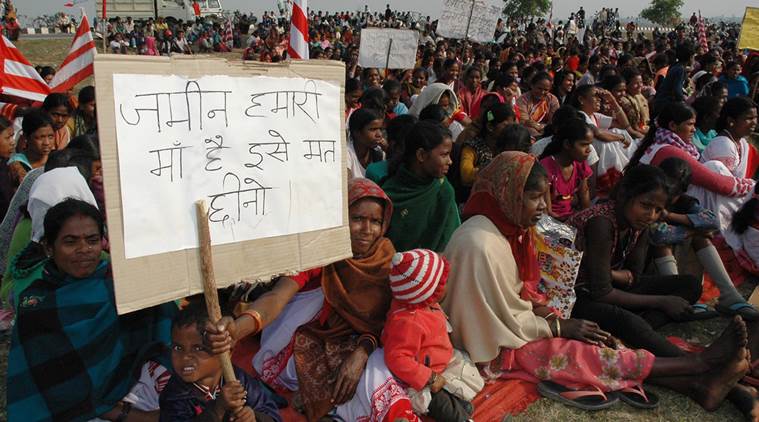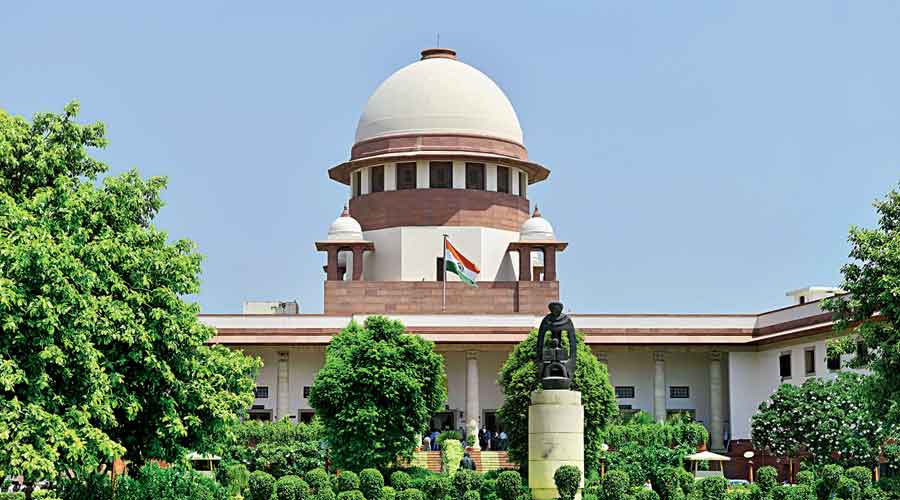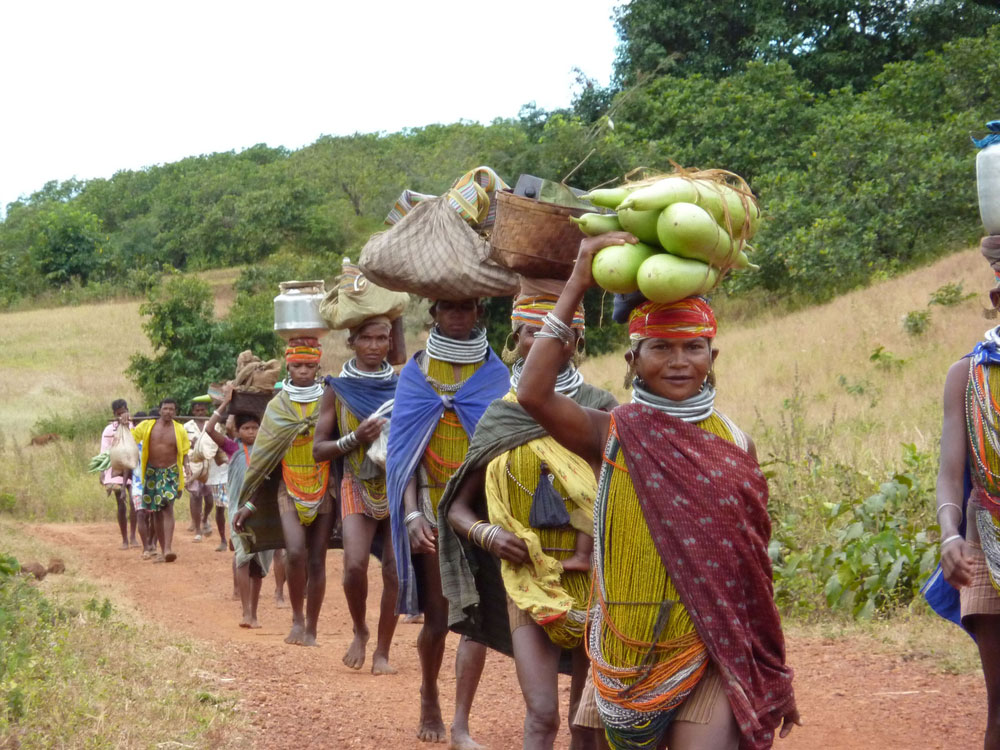Recently, the Ministry of Environment, Forests and Climate Change (MoEFCC) released the 2019 edition of the biennial India State of Forest Report in New Delhi. The report claims that forest cover has increased by 5,188 square kilometres in the past two years. Releasing the report, Prakash Javadekar, union minister of environment, forests and climate change, said there was an increase of 42.6 million tonnes in the carbon stock (carbon removed from the atmosphere) of the country as compared to the last assessment of 2017. He also said that the current assessment shows a decrease of forest cover to the extent of 765 sq km (0.45 per cent) in Northeast India.
The report says that Madhya Pradesh has the largest forest cover in the country, followed by Arunachal Pradesh, Chhattisgarh, Odisha and Maharashtra. In terms of forest cover as percentage of total geographical area, the top five states are Mizoram (85.41 per cent), Arunachal Pradesh (79.63 per cent), Meghalaya (76.33 per cent), Manipur (75.46 per cent) and Nagaland (75.31 per cent), which are all from the northeastern region of the country.
The Total Forest Cover (TFC) in India was 692,027 sq km in 2011. The TFC has increased by 20,222 sq km (or 3 per cent) since 2011. India has set a target to bring 33 per cent of its geographical area under forest cover. In 2019, the report says, the TFC is 21.67 per cent of the total geographical area (TGA) of India’s geography as against 21.54 per cent in 2017.
However, activists and researchers have expressed serious concern and challenged this latest report on many counts.
Reality check
Though Javadekar (and his ministry) has called for a celebration on the increase of the forest cover, the reality appears to be something different. A cursory look at some data from the report will give better insight on a decadal review of the forest cover.
Forest cover this decade (in sq km)
| 2011 | 2013 | 2015 | 2017 | 2019 | |
|---|---|---|---|---|---|
| Very dense forests (VDFs) | 83,471 | 83,502 | 85,904 | 98,158 | 99,278 |
| Moderately dense forests (MDFs) | 320,736 | 318,745 | 315,374 | 308,318 | 308,472 |
| Open forests (OFs) | 287,820 | 295,651 | 300,395 | 301,797 | 304,499 |
| Total | 692,027 | 697,898 | 701,673 | 708,273 | 712,249 |
Source: Indian State of Forest Report 2019
During the past decade there was an overall increase in the canopy by 20,222 sq km. Very Dense Forest (VDF) cover is 99,278 sq km (3.02 per cent), Moderately Dense Forest (MDF) is 3,08,472 sq km (9.39 per cent) and Open Forest (OF) is 3,04,499 sq kms (9.26 per cent). While VDF and OF have been consistently on the rise, MDF has decreased.
Virginius Xaxa is a former deputy director of Tata Institute of Social Sciences (TISS) Guwahati and was the chairperson of the committee set up by the Prime Minister’s Office in 2013 to put together a report on the socio-economic, health and educational status of Tribals. He says it is important to look at what has been described as forests in the report. “These [reports] are easy ways to cover up [the reality of] the forests being lost due to mining, industrialization and other development projects,” says Xaxa.
MDFs are closer to human habitation, particularly of Adivasis, which has critically declined. A look at the forest cover during the decade shows a consistent increase in the area under the OF category, which includes commercial plantations. This seems to be happening at the cost of the MDF category, which is normally the area close to human habitations. Therefore, the said increase in OFs, of 16,679 sq km, is at the cost of 12,264 sq km of MDF, where Adivasi and other indigenous communities live in close proximity.

Forest rights activist Sanjay Basu Mallick of Jharkhand Jungle Andolan (JJA) says, “What has been presented as an increase in forest cover is at one level a farce and at another level a result of our consistent struggles.” He explains, “In the OF category, they have added the huge monoculture plantations of teak, eucalyptus, rubber, tea, etc. and private forests. This has nothing to do with the actual forest cover. On the other hand, there is a lot of diversion of forest land, belonging to the MDF category, for industrial and other purposes.”
According to the report, India has continued to lose its MDFs since 2011, but for a marginal increase of 0.04 per cent between 2017 and 2019. After a 0.62 per cent decrease in the area under this category between 2011 and 2013, it further decreased by 1.05 per cent between 2013 and 2015. Then, it declined by 2.2 per cent between 2015 and 2017.
The report hardly reflects on the Adivasi community’s contribution in protection and enriching the quality of forests. Several other reports highlight the contribution of Adivasis in protecting the forests. JJA recognizes the contribution of the Adivasis and seeks to restore their rights to them. JJA’s Mallick says: “In 542 villages, we have succeeded in protecting forests through our struggles. Under the Scheduled Tribes and Other Traditional Forest Dwellers (Recognition of Forest Rights) Act, [commonly known as FRA] 2006, we have claimed Community Forest Rights [CFR] on 2,26,691.875 acres. People are protecting this forest, which has improved the quality of the forest in terms of biodiversity, by preventing monoculture plantations. Only 18 pattas (land deeds) have been granted to date. The rest are either pending or have been refused by the forest department under various pretexts. However, people have not left the land and have been managing the forests. They haven’t allowed any deforestation or diversion of this land for any mining or industrial purpose.”
Did CAMPA work?
There have been question marks over the role of the Forest Department and the policy of forest conservation, particularly in the context of the assault on Adivasi rights and entitlement to land and forests. Studies have found that Forest Conservation Act (FCA) 1980 has on the one hand failed to prevent denudation of forest, while on the other hand, large-scale displacement of Adivasis has resulted from the mining and industrial projects gobbling up forest areas. Panchayat (Extension to Scheduled Areas) Act (PESA) 1996 and FRA were enacted to check alienation of Adivasis from their lands as well as massive acquisition of Adivasi land for public and private purposes without providing alternative rehabilitation or land to them. This has not materialized. The image of a devouring forest bureaucracy, grabbing whatever is left of their rights and resources for a dignified livelihood, persists.
Though some Compensatory Afforestation was being carried out even before the Supreme Court’s interventions laid down the contours and modalities of management of the funds collected for it, the earlier monies allocated for this purpose remained underutilized. The Supreme Court in 2002, therefore, directed the setting up of a Compensatory Afforestation Fund Management and Planning Authority (CAMPA). This went entirely against the Adivasis.
The latest in this series is the Compensatory Afforestation Fund Act (CAFA) 2016 and rules (2018) for its implementation. Compensatory Afforestation was not mandatory under FCA. K.B. Saxena details how it has led to a warlike situation between the Adivasis and the powerful caucus of corporates, bureaucracy and the political establishment for rights over forest land. On the enactment of CAFA, he writes, “The law was enacted hurriedly without any prior legislative scrutiny and amid protests by several members of the opposition, taking advantage of the direction given by the Supreme Court. It goes further than any other law in the past in denying tribals’ rights in the forests, grabbing their village forests, pastures and commons, and intensifying their forcible relocation from protected forests.”
CAFA 2016 was prima facie enacted to utilize monies deposited with the forest department for carrying out compensatory afforestation to make up for forest land diverted to other uses. But the preamble of the Act has gone beyond compensatory afforestation and includes protection of forests, infrastructure development, wildlife protection and other related activities, besides artificial regeneration (plantations) and assisted natural regeneration, in its approved list of activities to be carried out with the Compensatory Afforestation Fund. Forest rights activist Tusar Dash says, “CAFA has very little scope for Adivasis in its planning, implementation, monitoring and evaluation. The department argues that Adivasis are a threat to the forest, which is absolutely the biggest farce.”
Forest land diversion
CAFA speaks clearly of forest diversion, while CAMPA is meant to compensate for this. Indian forest cover is today under the threat of fake data and further displacement of Adivasis. Mallick says, “In 2018 alone, [the] media has reported that nearly 26,000 acres of forest land has been diverted for non-forest purpose.”
Indian State of Forest Report 2019 does not tell the real story. Dash says, “There is no clear data provided on the area of forest land being diverted for mining, industrial and other projects. Plantations are unsustainable and ecologically destructive, and further, they lead to loss of biodiversity. They damage the livelihood, food, nutrition and diversity of the Adivasis. Defining plantations as forests in fact conceals the destruction of Adivasi lands. Such a pattern of misinformation is planted to create a new discourse of forest management.”
During the United Progressive Alliance (UPA) government, Jairam Ramesh, then minister of environment and forests, was critical about forest land diversions. His ministry then had rejected the application of the company Vedanta Resources for diversion of forest land both in Mainpat (Chhattisgarh) and Niyamgiri (Odisha).
While, on the surface, CAMPA appears to be a feasible method to keep forest cover intact without arresting deforestation, Adivasis and other indigenous groups continue to suffer. In fact, they suffer twice: First, when they lose forest in the name of development projects and second when plantations are grown on their common land to compensate for the diversions.

A study on the impact of compensatory afforestation on land and forest rights finds that in just the four states of Chhattisgarh, Odisha, Jharkhand and Maharashtra Rs 420 billion was collected under Compensatory Afforestation Fund from companies and government agencies. This fund is being used by CAMPA. The report details encroachment on Adivasi Community Forest Rights by growing of plantations, creation of land bank (by the government to meet industrial needs) using common land, and violation of the authority of gram sabhas in the Fifth Schedule Area. No consent is taken from the gram sabhas of Adivasi majority villages for growing plantations even when these pose threats to the biodiversity of the area and nutritional and livelihood security of Adivasis and other indigenous groups, especially the women and Particularly Vulnerable Tribal Groups (PVTGs). Thus, the perverse incentive of deforestation, that is corruption and mismanagement of funds and a clear aggravation of forest related conflicts, reigns supreme.
Land Conflict Watch has documented 44 conflicts linked to forest plantation across India. These concern 51,000 people and 114,000 hectares of forest land. E-green watch has already documented the diversion of 1,510,146 hectares of forest land between 1980-2016 for non-forestry purpose, out of which 46 per cent (702,551 hectares) happened in the last ten-year phase alone (2006-16).
Forest land diverted to non-forestry uses
| 1980-2016 (in hectares) | 2006-16 (in hectares) | Percentage | |
|---|---|---|---|
| India | 1,510,146 | 702,551 | 46 |
| Chhattisgarh | 50,138 | 30,494 | 61 |
| Jharkhand | 37,176 | 23,707 | 64 |
| Odisha | 72,275 | 30,667 | 42 |
| Maharashtra | 37,753 | 16,607 | 44 |
| Rajasthan | 41,406 | 20,870 | 50 |
Source: E-green watch
A recent study by Legal Initiative for Forest and Environment (LIFE) analyzes forest diversification in India from January to June 2019. The study finds that 9,220.64 hectares (about 100 sq km) of forest land was recommended for diversion for non-forestry use, such as mining, roads, railways, hydel power and infrastructure. About 43 per cent of this land falls within wildlife habitats. Out of the 240 proposals that have sought diversion of forest land, only seven were rejected. This implies that an insignificant 1.01 percent of forest land considered for diversion was rejected for non-forestry use. Linear proposals (roads, railways, transmission lines, pipelines) account for 53.66 per cent of forest land recommended for diversion, and irrigation and mining projects together account for 41.69 per cent. Significantly, 59.16 per cent of forest land recommended for diversion falls under the MDF and VDF categories.
Criticisms of the Indian government’s forest policy are manifold: Misinformation to the global community in the context of the commitment to reduce carbon emission; including plantations and private forest as part of the forest cover; CAFA as a strategy that shows an increase in forests but in fact undermines socio-cultural and economic institutions of Adivasis and other indigenous people, rich biodiversity of the forests, and impacts wildlife. This is against the spirit of conservation by community-based management practices.
Xaxa says, “There are many arbitrary ways of declaring community land as forests. This land is first annexed to the land bank and later transferred for mining or industrial purposes. While mining and industrialization leads to deforestation, a corrupt form of lip service has been given in the name of afforestation. The fact is that the actual forests are shrinking. Even the artificial monoculture plantation cannot compensate for that shrinkage. At the very least it is misleading. This aggravates the existing conflicts between the Adivasis and the various government departments of which forest (department) is only one.”
Forward Press also publishes books on Bahujan issues. Forward Press Books sheds light on the widespread problems as well as the finer aspects of the Bahujan (Dalit, OBC, Adivasi, Nomadic, Pasmanda) community’s literature, culture, society and culture. Contact us for a list of FP Books’ titles and to order. Mobile: +919968527911, Email: info@forwardmagazine.in).






